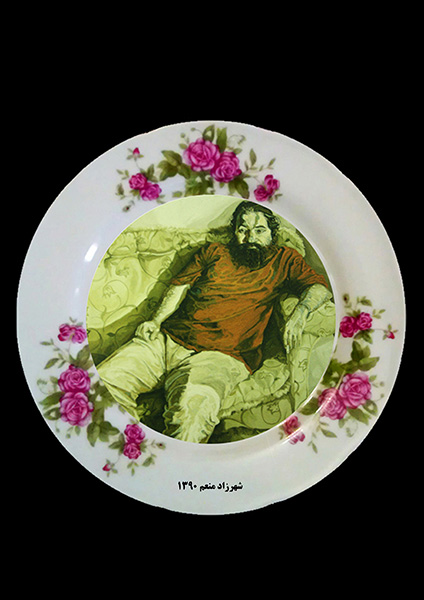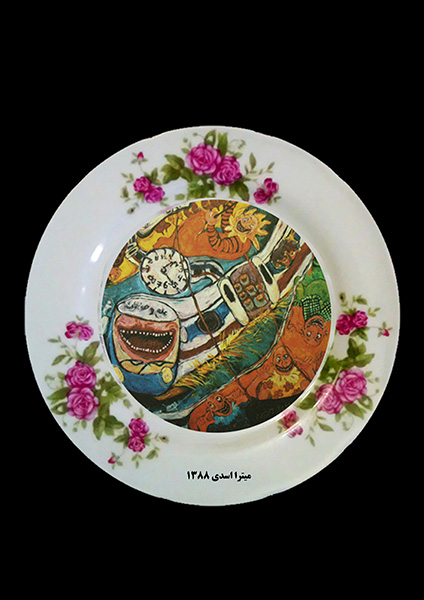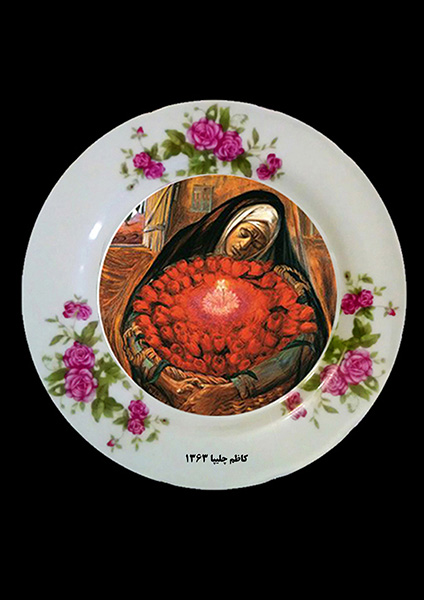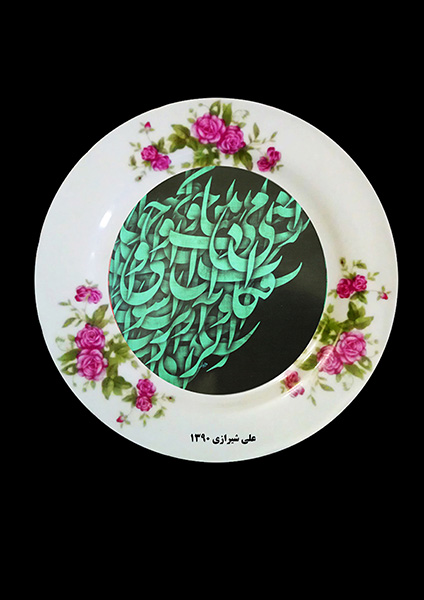Persian meal
As with painters who came to believe that painting and genius had reached their highest zenith of perfection and nothing could have been done but Mannerism after renaissance painters such as da Vinci, Michelangelo and Rafael, another belief also emerged that Formalistic painting (image for the sake of image) in the first half of twentieth century had achieved its full potentials on two-dimension surface of canvas and new forms could not have been created, thus modernistic purism – in which artist expressed his/her view as the subject – was replaced with Mannerism. From the author’s point of view, Contemporary Mannerism has led to creation of Rococo due to its consumerism. Rococo— the symbol of consumerist style in art history which is presented as the worthlessness of pictures, are works of paintings which decorate plates (as superficial and practical symbol of consumption). Works with lovers themes which have been created by prominent Rococo painters such as François Boucher, Jean-Honoré Fragonard and Jean-Antoine Watteau stir up nostalgic memories even for us as Iranian and are the reminder of images on plates and dishes which we had seen mostly in our childhood.
Now, it comes as no surprise that Contemporary Mannerism—representative of modern consumable art— decorates inside of plates.
Pejman SafarNejad
Spring 2014

































